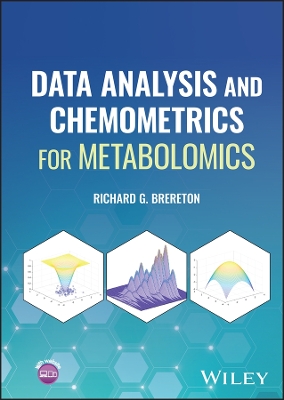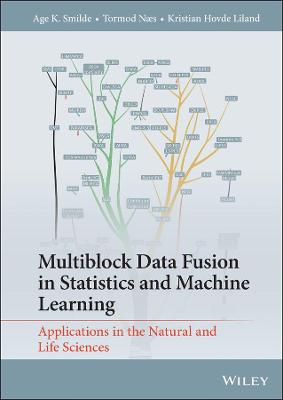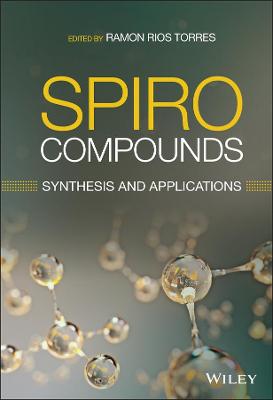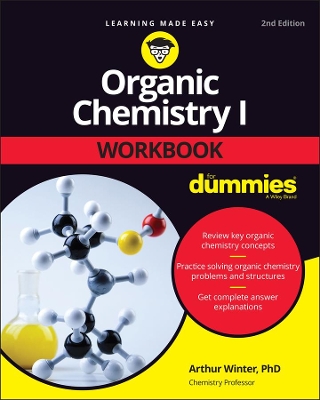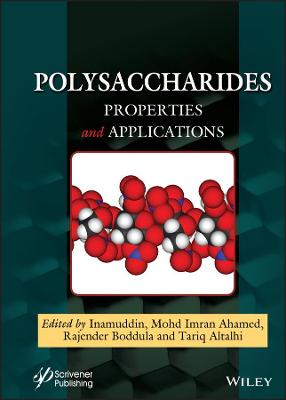Organic Nanochemistry
 -10%
portes grátis
-10%
portes grátis
Organic Nanochemistry
From Fundamental Concepts to Experimental Practice
Zhao, Yuming
John Wiley & Sons Inc
01/2024
288
Dura
Inglês
9781118870457
15 a 20 dias
666
1 Fundamental Concepts 1
1.1 Introduction to Nanoscience and Nanotechnology 1
1.2 Nanochemistry in Action 4
1.3 Structures and Covalent Bonding of Organic Compounds 6
1.3.1 Localized Covalent Bonds and Lewis Structures 6
1.3.2 Delocalized Covalent Bonds, Conjugation, and Resonance Theory 11
1.3.3 Aromaticity and Hueckel Molecular Orbital (HMO) Theory 12
1.3.4 Hyperconjugation and Orbital Interactions 17
1.4 Non-Covalent Interactions and Supramolecular Chemistry 19
1.4.1 Electrostatic Interactions Involving Ions and Dipoles 19
1.4.2 Hydrogen Bonding Interactions 22
1.4.3 Interactions Involving ?-Systems 25
1.4.4 Induced-Dipole Forces 27
1.4.5 Charge-Transfer Interactions 28
1.4.6 Hydrophobic Effects 31
1.5 Solvent Effects 33
2 Synthetic Methodologies for Preparation of Organic Nanomaterials 39
2.1 Organic Synthesis for Nanotechnology 39
2.2 Planning the Synthesis 40
2.3 Useful Synthetic Methodologies for Organic Nanomaterials 42
2.3.1 Carbon-Carbon Bond Formation via Pd-Catalyzed Cross-Coupling Reactions 42
2.3.2 Carbon-Carbon Bond Formation via Other Types of Cross-Coupling Reactions 49
2.3.3 Carbon-Carbon Bond Formation through TM-Catalyzed Homocoupling Reactions 52
2.3.4 Alkene and Alkyne Metathesis Reactions 58
2.3.5 Click Reactions 63
2.3.6 Dynamic Covalent Chemistry 70
2.4 Methods for Surface Functionalization 72
3 Molecular Recognition and Supramolecular Self-Assembly 81
3.1 History of Molecular Recognition and Supramolecular Chemistry 81
3.2 Binding and Binding Constants 84
3.3 Cooperativity and Multivalency 93
3.4 Preorganization and Complementarity 98
3.5 Thermodynamic and Kinetic Selectivity 104
3.6 Common Scaffolds of Synthetic Receptors 105
3.6.1 Crown Ethers 105
3.6.2 Podands and Lariat Ethers 108
3.6.3 Spherands, Hemispherands, and Cryptaspherands 109
3.6.4 Calixarenes and Resorcinarenes 110
3.6.5 Cavitands and Carcerands 113
3.6.6 Cyclodextrins and Cucurbiturils 117
3.7 Templated Synthesis of Macrocycles 121
4 Chemistry of Carbon Nanoallotropes 131
4.1 Classification of Carbon Nanoallotropes 131
4.2 Structural Properties of C 60 and C 70 Fullerenes 135
4.3 Reactivities of C 60 Fullerene 137
4.3.1 Nucleophilic Addition 137
4.3.2 Cycloaddition 140
4.3.3 Other Reactivities of C 60 Fullerene 143
4.3.4 Organic Synthesis of C 60 Fullerene 146
4.4 Chemistry of Carbon Nanotubes 147
4.4.1 Growth Mechanisms of Single-walled Carbon Nanotubes 147
4.4.2 Chirality of SWCNT 148
4.4.3 Non-Covalent Functionalization of SWCNTs 149
4.4.4 Covalent Functionalization of SWCNTs 155
4.5 Chemistry of Graphene, Graphene Oxide, and Reduced Graphene Oxide 158
4.6 Chemistry of Carbon Quantum Dots 162
4.7 Chemistry of Molecular Nanocarbons 163
4.7.1 Molecular Bowls 164
4.7.2 Carbon Nanorings and Carbon Nanobelts 165
4.7.3 Molecular Nanographenes and Nanographene Ribbons 171
5 Synthetic Molecular Devices and Machines 181
5.1 Basic Concepts of Molecular Devices and Machines 181
5.2 Fundamentals of Photophysical and Photochemical Principles 184
5.3 Photochemically Induced Olefin Cis-Trans Isomerization 188
5.4 Case Study I: Photo-driven Molecular Motors and Molecular Cars 192
5.5 Case Study II: An Electrically Driven Molecular Car 198
5.6 Case Study III: Chemically Driven Molecular Motors 200
5.7 Case Study IV: A Redox-driven Molecular Pump 204
6 Computational Modeling and Simulations in Organic Nanochemistry 211
6.1 Introduction to Computational Chemistry 211
6.2 Computational Methods for Modeling from Macroscopic to Nanoscale Systems 214
6.3 Computational Methods for Solving the Electronic Schroedinger Equation 219
6.3.1 Electronic Structure Calculations 219
6.3.2 Hartree-Fock Methods 220
6.3.3 Density Functional Theory Methods 221
6.3.4 Semi-Empirical Methods 223
6.3.5 Basis Sets 224
6.4 Applications of Electronic Structure Calculations 226
6.4.1 Computational and Visualization Software 226
6.4.2 Geometry Optimization 229
6.4.3 QM Simulations of Other Molecular Properties 240
6.5 Computational Methods Based on Empirical Force Field Models 246
6.5.1 Introduction to Molecular Mechanics 246
6.5.2 Basics of Force Fields 247
6.5.3 Basics of Molecular Dynamics Simulations 250
6.5.4 A Case Study of Ab Initio Molecular Dynamics Simulations 252
6.5.5 A Case Study of Tight-binding MD Simulations 254
6.6 Machine Learning in Nanochemistry 256
Index 263
1 Fundamental Concepts 1
1.1 Introduction to Nanoscience and Nanotechnology 1
1.2 Nanochemistry in Action 4
1.3 Structures and Covalent Bonding of Organic Compounds 6
1.3.1 Localized Covalent Bonds and Lewis Structures 6
1.3.2 Delocalized Covalent Bonds, Conjugation, and Resonance Theory 11
1.3.3 Aromaticity and Hueckel Molecular Orbital (HMO) Theory 12
1.3.4 Hyperconjugation and Orbital Interactions 17
1.4 Non-Covalent Interactions and Supramolecular Chemistry 19
1.4.1 Electrostatic Interactions Involving Ions and Dipoles 19
1.4.2 Hydrogen Bonding Interactions 22
1.4.3 Interactions Involving ?-Systems 25
1.4.4 Induced-Dipole Forces 27
1.4.5 Charge-Transfer Interactions 28
1.4.6 Hydrophobic Effects 31
1.5 Solvent Effects 33
2 Synthetic Methodologies for Preparation of Organic Nanomaterials 39
2.1 Organic Synthesis for Nanotechnology 39
2.2 Planning the Synthesis 40
2.3 Useful Synthetic Methodologies for Organic Nanomaterials 42
2.3.1 Carbon-Carbon Bond Formation via Pd-Catalyzed Cross-Coupling Reactions 42
2.3.2 Carbon-Carbon Bond Formation via Other Types of Cross-Coupling Reactions 49
2.3.3 Carbon-Carbon Bond Formation through TM-Catalyzed Homocoupling Reactions 52
2.3.4 Alkene and Alkyne Metathesis Reactions 58
2.3.5 Click Reactions 63
2.3.6 Dynamic Covalent Chemistry 70
2.4 Methods for Surface Functionalization 72
3 Molecular Recognition and Supramolecular Self-Assembly 81
3.1 History of Molecular Recognition and Supramolecular Chemistry 81
3.2 Binding and Binding Constants 84
3.3 Cooperativity and Multivalency 93
3.4 Preorganization and Complementarity 98
3.5 Thermodynamic and Kinetic Selectivity 104
3.6 Common Scaffolds of Synthetic Receptors 105
3.6.1 Crown Ethers 105
3.6.2 Podands and Lariat Ethers 108
3.6.3 Spherands, Hemispherands, and Cryptaspherands 109
3.6.4 Calixarenes and Resorcinarenes 110
3.6.5 Cavitands and Carcerands 113
3.6.6 Cyclodextrins and Cucurbiturils 117
3.7 Templated Synthesis of Macrocycles 121
4 Chemistry of Carbon Nanoallotropes 131
4.1 Classification of Carbon Nanoallotropes 131
4.2 Structural Properties of C 60 and C 70 Fullerenes 135
4.3 Reactivities of C 60 Fullerene 137
4.3.1 Nucleophilic Addition 137
4.3.2 Cycloaddition 140
4.3.3 Other Reactivities of C 60 Fullerene 143
4.3.4 Organic Synthesis of C 60 Fullerene 146
4.4 Chemistry of Carbon Nanotubes 147
4.4.1 Growth Mechanisms of Single-walled Carbon Nanotubes 147
4.4.2 Chirality of SWCNT 148
4.4.3 Non-Covalent Functionalization of SWCNTs 149
4.4.4 Covalent Functionalization of SWCNTs 155
4.5 Chemistry of Graphene, Graphene Oxide, and Reduced Graphene Oxide 158
4.6 Chemistry of Carbon Quantum Dots 162
4.7 Chemistry of Molecular Nanocarbons 163
4.7.1 Molecular Bowls 164
4.7.2 Carbon Nanorings and Carbon Nanobelts 165
4.7.3 Molecular Nanographenes and Nanographene Ribbons 171
5 Synthetic Molecular Devices and Machines 181
5.1 Basic Concepts of Molecular Devices and Machines 181
5.2 Fundamentals of Photophysical and Photochemical Principles 184
5.3 Photochemically Induced Olefin Cis-Trans Isomerization 188
5.4 Case Study I: Photo-driven Molecular Motors and Molecular Cars 192
5.5 Case Study II: An Electrically Driven Molecular Car 198
5.6 Case Study III: Chemically Driven Molecular Motors 200
5.7 Case Study IV: A Redox-driven Molecular Pump 204
6 Computational Modeling and Simulations in Organic Nanochemistry 211
6.1 Introduction to Computational Chemistry 211
6.2 Computational Methods for Modeling from Macroscopic to Nanoscale Systems 214
6.3 Computational Methods for Solving the Electronic Schroedinger Equation 219
6.3.1 Electronic Structure Calculations 219
6.3.2 Hartree-Fock Methods 220
6.3.3 Density Functional Theory Methods 221
6.3.4 Semi-Empirical Methods 223
6.3.5 Basis Sets 224
6.4 Applications of Electronic Structure Calculations 226
6.4.1 Computational and Visualization Software 226
6.4.2 Geometry Optimization 229
6.4.3 QM Simulations of Other Molecular Properties 240
6.5 Computational Methods Based on Empirical Force Field Models 246
6.5.1 Introduction to Molecular Mechanics 246
6.5.2 Basics of Force Fields 247
6.5.3 Basics of Molecular Dynamics Simulations 250
6.5.4 A Case Study of Ab Initio Molecular Dynamics Simulations 252
6.5.5 A Case Study of Tight-binding MD Simulations 254
6.6 Machine Learning in Nanochemistry 256
Index 263


